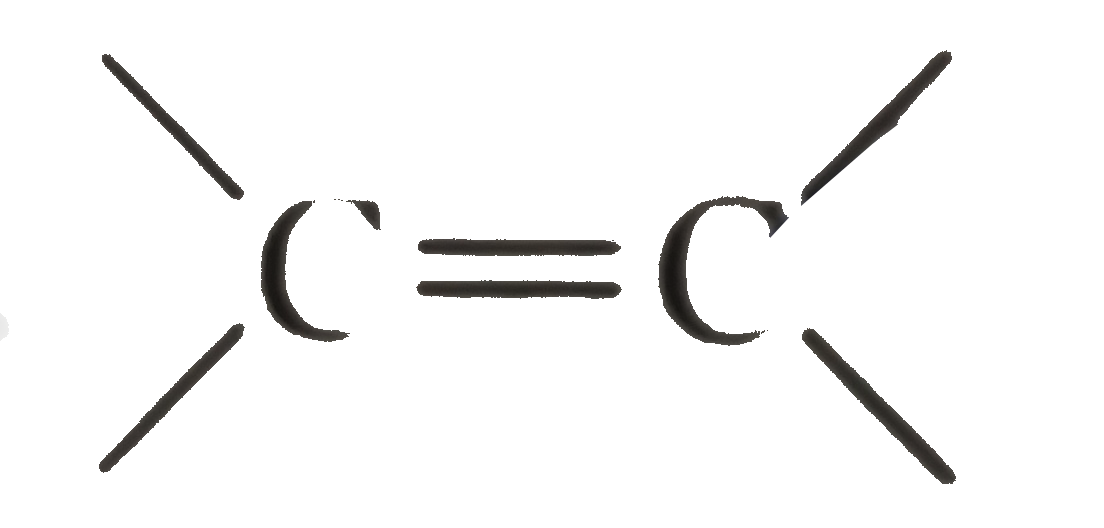The stability of carbanions in the following:
(i) RC≡CΘ (ii)  (iii) R2C=ΘCH (iv) R3C−ΘCH2 in the order of: (iv) > (ii) > (iii) > (i); (i) > (iii) > (ii) > (iv); (i) > (ii) > (iii) > (iv); (ii) > (iii) > (iv) > (i)
Solution in Malayalam
(iii) R2C=ΘCH (iv) R3C−ΘCH2 in the order of: (iv) > (ii) > (iii) > (i); (i) > (iii) > (ii) > (iv); (i) > (ii) > (iii) > (iv); (ii) > (iii) > (iv) > (i)
Solution in Malayalam
(iv) > (ii) > (iii) > (i)
(i) > (iii) > (ii) > (iv)
(i) > (ii) > (iii) > (iv)
(ii) > (iii) > (iv) > (i)
The correct Answer is:C
The stability of the carbanion decreases as the electronegativity of the carbon carrying the -ve charge decreases or the hybridization of the carbon carrying the -ve charge changes from sp−sp2−sp3. Thus, RC≡C− (i) is the most stable while R3C−CH−2 (iv) is the least stable carbanion. The carbon atom carrying the -ve charge in both C6H−5 and R2C=CH− is sp2-hybridized. Out of these two, R2C=CH− (iii) is less stable than C6H−5 (ii) due to +I-effect of the two R groups. Thus, the overall stability decreases in the order: (i) > (ii) > (iii) > (iv), ie,
Topper's Solved these Questions
- ORGANIC CHEMISTRY : SOME BASIC PRINCIPLES - PART II (ISOMERISM AND REACTION MECHANISM) BOOK - BRILLIANT PUBLICATIONCHAPTER - ORGANIC CHEMISTRY : SOME BASIC PRINCIPLES - PART II (ISOMERISM AND REACTION MECHANISM) EXERCISE - LEVEL-II
40 Videos
- ORGANIC CHEMISTRY : SOME BASIC PRINCIPLES - PART II (ISOMERISM AND REACTION MECHANISM) BOOK - BRILLIANT PUBLICATIONCHAPTER - ORGANIC CHEMISTRY : SOME BASIC PRINCIPLES - PART II (ISOMERISM AND REACTION MECHANISM) EXERCISE - LEVEL-II (ASSERTION-REASON TYPE)
20 Videos
- ORGANIC CHEMISTRY : SOME BASIC PRINCIPLES - PART I (NOMENCLATURE) BOOK - BRILLIANT PUBLICATIONCHAPTER - ORGANIC CHEMISTRY : SOME BASIC PRINCIPLES - PART I (NOMENCLATURE) EXERCISE - LEVEL-III
45 Videos
- ORGANIC CHEMISTRY : SOME BASIC PRINCIPLES - PART III (PURIFICATION AND CHARACTERISATION OF ORGANIC COMPOUNDS) BOOK - BRILLIANT PUBLICATIONCHAPTER - ORGANIC CHEMISTRY : SOME BASIC PRINCIPLES - PART III (PURIFICATION AND CHARACTERISATION OF ORGANIC COMPOUNDS) EXERCISE - LEVEL-II (ASSERTION-REASON TYPE)
15 Videos
Similar Questions
In the following compounds, nucleophile and the leaving groups are in the same molecule:

These dual nature species can undergo intramolecular and intermolecular nucleophilic substitution. Intramolecular substitution reaction is possible in: I, II; II, III; III, IV; IV
View SolutionAssertion : Simple carbanions are usually pyramidal but allyl carbanion is a planar species.
Reason : All the carbon atoms in allyl carbanion are sp2-hybridized.
View SolutionGive the IUPAC name of the following compound:

View SolutionAssertion : Sulphur present in an organic compound can be estimated quantitatively by Carius method.
Resaon : Sulphur is separated easily from other atoms in the molecule and gets precipitated as light yellow solid.
View SolutionThe decreasig order of priority for the following functional groups is:
I.−OH II gt −C≡C−
III. IV. −NH2
IV. −NH2
View SolutionExplain the following :
(a) In gaseous phase, the acidic characters of the following are :
(i) CH3CH2COOH(I)>CH3COOH(II)
(ii) ClCH2COOH(III)>FCH2COOH(IV)
(iii) Me3C−OH(V)>MeCH2CH2CH2OH(VI).
(b) Account for the following differences in the acidic characters of the following :
(i) (I)Me3C−CH2−COOH>(II)Me3SICH2COOH
(ii) (III)H2C=CHCH2COOH>(IV)CH3CH2COOH
(iii) (V)HC≡C−CH2COOH(pKa3.22)>(VI)H2C=CHCH2COOH(pKa=4.35)
(iv) CH3−C∣∣O−CH2−COOH>
(v) (IX)N≡C−CH2COOH>(X)CH3COCH2−COOH
(vi) (XI)PhCh2COOH>(XII)CH2=CHCH2COOH.
View SolutionRate of SN1 & SN2 reactions for the isomers of C4H9Br is
i. n- Butylbromide
ii isobutylborimide
ii s-Butylbromide
iv. t-Butylbromide
a. i>ii>iii>iv for SN2
b. i>ii>iii>iv for SN1
c. iv>iii>ii> for SN2
d. iv>iii>ii>i for SN1
View Solution{:((A)DeltaG^(Theta)gt 0,,,,(i)K gt1),((B)Delta G^(Theta)lt 0,,,,(ii)K=1),((C)DeltaG^(Theta)gt 0,,,,(iii)K=0),( ,,,,(iv)Klt1):}
View SolutionSketch the origin in which the points satisfying the following inequality lie.
(i)2x−3y−5>0 (ii) −3x+4y+7>0
(iii)x>2 (iv) y>−3
View Solutionतत्वों B,C,N,F और Si के लिए अधातु अभिलक्षण का इनमे से सही क्रम कौन - सा है ?
(i) B>C>Cr>N>F (ii) Si>C>B>N>F
(iii) F>N>C>B>Si (iv) F>N>CS>B
View SolutionThe correct solubility order is/are
I. CaCO3>SrCO3>BaCO3
II. Li2CO3<Na2CO3<K2CO3
III. K2CO3<Rb2CO3<Cs2CO3
IV. Na2CO3>K2CO3>Rb2CO3
View SolutionNotice the following IE value comparison I Mg> Na II F> O III Be> Li IV F> Ne Which of the following is a false comparison?
View SolutionSketch the origin in which the points satisfying the following inequality lie.
(i)2x−3y−5>0 (ii) −3x+4y+7>0
(iii)x>2 (iv) y>−3
View Solutionनिम्न में से I प्रभाव का असत्य क्रम है :)
(I) −⊕N(CH3)3>−⊕S(CH3)2 [−I] (II)−OCH3>−OH (III)−F>−Cl [−I] (IV)−CH3>−ΘO
View SolutionGiven are cyclohexanol (I), acetic acid (II),2,4,6−trinitrophenol (III) and phenol (IV). In these the order of decreasing acidic character will be:
(a)III>II>IV>I
(b)II>III>I>IV
(c)II>III>IV>I
(d)III>IV>II>I
View SolutionThe decreasig order of priority for the following functional groups is: I. -OH II gt -C -= C- III. IV. -NH_(2)
View Solution
